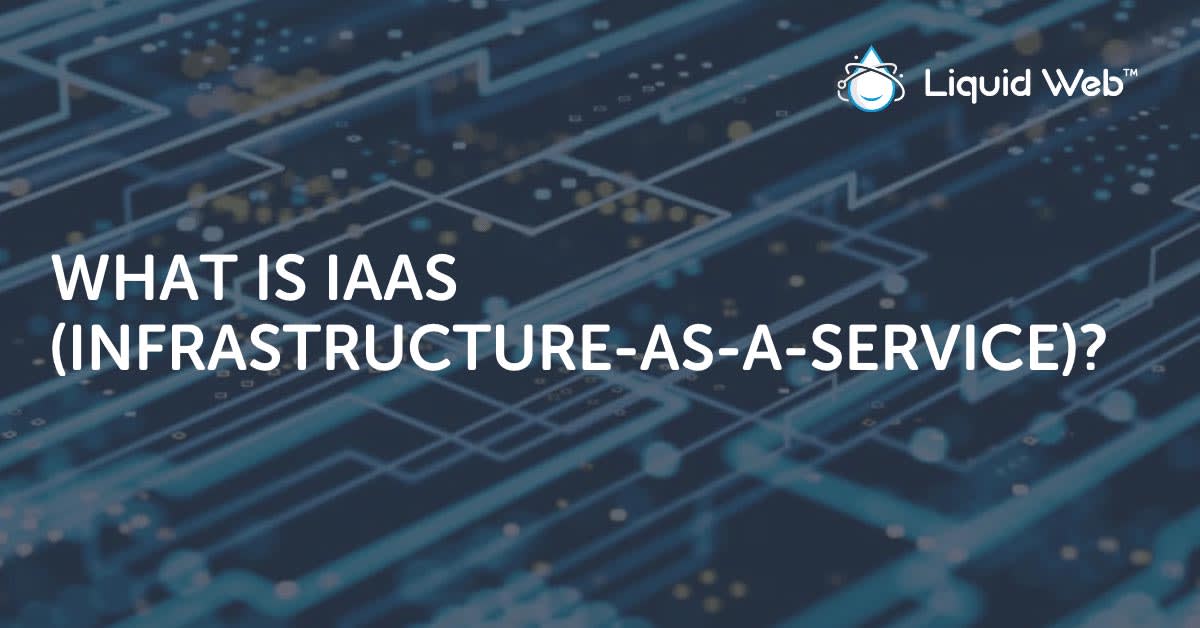
IaaS in Cloud Computing
At its core, Infrastructure-as-a-Service (IaaS) is the provisioning and management of server infrastructure so that businesses and individual users can remove the worry or work that typically goes with the care and feeding of the infrastructure itself.
For example, an IaaS provider likely provides not just servers but also connectivity, physical security, and electricity to the user. Imagine if your business was responsible for each of those things? Now imagine that you’re also responsible for hardware upgrades, backups, and software updates.
Infrastructure-as-a-Service handles these critical but cumbersome responsibilities so that you can focus on using those resources and not be concerned with whether or not they are working properly.
If you want to provide your services on the Internet, you need the software for these services (for example, a website) deployed onto a server online. You could own this server and manage it yourself, but it is more common to use a hosting provider that takes care of the hardware for you. Whether leveraging a public or private cloud option, you’ll be counting on the provider to handle a number of crucial details.
On top of that, this hosting provider can virtualize the server in such a way that you no longer think of it as one specific computer but instead, you see its resources available on-demand. This is the infrastructure that the hosting provider makes available to you as a service.

Determine Your IaaS Resources
IaaS typically comes in the form of a server that you rent as a whole. There are a large number of configurations that you can choose from; each with different amounts of resources at a corresponding price.
There are four core resources that are always available in these servers depending on your specific use case and needs:
1. Compute Capacity
The first resource that you will choose is how much compute capacity you want. Depending on how much processing power you need, you can choose a cheaper but less powerful CPU, or you can go for a powerful multi-core CPU. Tasks that require lots of calls to a database or complex functions may require more processing power whereas less taxing tasks and static web pages likely require less processing power. While a private cloud offers additional layers of security and customization, a public cloud offers burstable compute resources in the event of high traffic or utilization.
2. Volatile Memory
When your server is turned on, it will use the Random Access Memory, or RAM, for the data that is actively used by the CPU. This RAM is much faster than data storage solutions like disk drives, but it is also available in relatively small capacities.
Be careful to keep your memory usage under the amount that you reserved. Going over that limit is possible, but it will make your server a lot slower. Additionally, a spike in needed RAM can cause costs to accumulate when not properly planned for.
3. Data Storage
You will need to store your data somewhere, so your infrastructure always comes with some allocation of SSD (which is very fast but typically has lower capacity) and SATA disks (which is slower but comes with much more cost-effective storage space). Many IaaS solutions provision both SSD and SATA disks in the same environment so that your data can be stored in a way that fits the budget but doesn’t sacrifice performance.
This storage should be dedicated to your running services. So, if there is any data that doesn’t need to be on your server, you should archive it somewhere else to free up the server.
Since the data stored by your services is critical to your operations, you can take one step up and use a Database-as-a-Service. This will provide you with a reliable and performant database solution.
4. Networking
Finally, your server will need to be able to communicate with you or your customers via the Internet. This will use a certain amount of outbound bandwidth (data leaving your server). Inbound bandwidth is often free. Most IaaS providers will allocate a certain amount of bandwidth for you as part of your purchase. The good news is that, once again, the “…as-a-Service” component of your infrastructure means that your provider will manage and maintain the network so that your server environment remains accessible.
Monitor how much bandwidth your server uses over a week to estimate how much you will need for that month. Then, make sure to reserve more bandwidth ahead of time if you think that it will not be enough.
Other Resources
The IaaS provider will often have extra features like firewalls, VPN, and more to protect you from malicious Internet traffic. A content delivery network (CDN) and a load balancer to increase the scalability of your services and most reliable IaaS providers either provide these options or have partnerships with firms that do.
What are the Benefits of Infrastructure-as-a-Service?
On-Demand
IaaS provides scalable resources that can adapt to the changing needs of your company. These resources can be increased or reduced with just a few clicks, and they will be available to you after a few minutes. For example, if your website receives a huge number of requests on Black Friday, you can allocate more resources just for that time without having to full-on purchase and configure more servers.
This is also very useful for starting a new project with a small server. IaaS gives you the option to grow over time or shut the infrastructure down if your project doesn’t work out. There will be no upfront costs and no long-term contracts. You can also temporarily allocate large servers to stress test your service and ensure that it is properly designed to handle a large number of users in the future. Public cloud deployments allow you to take advantage of on-demand compute and storage, only charging for exactly what you use.
IaaS is therefore an ideal solution that lets you innovate and adapt without sacrificing reliability or performance.
Pay-As-You-Go
IaaS is typically a month-to-month subscription-based with no long-term contracts (unless you specifically choose them, which can reduce your costs). So, you pay only for what you consume, which allows you to optimize costs but also to better budget your expenses.
Fully Managed
IaaS frees you from having to worry about the hardware that runs your services. Your service provider takes care of handling hardware failures, security issues, infrastructure maintenance, improvements, and performance optimizations. Data services will typically come with a backup service that ensures that you never lose your data accidentally.
IaaS always comes with a Service Level Agreement (SLA) for you to know what you can expect.
Finally, you will have access to a support team that can assist you with any issue very quickly.
Focus On Your Business With IaaS
IaaS opens the door to the Cloud, a hosting environment where computing power, data storage, and networking is made available to you when and how you need it.
Thanks to this model, you are free to focus on your core business and how to best serve your customers.
Here at Liquid Web, we’ve provided managed hosting and infrastructure solutions to businesses and web professionals around the world for twenty years. Our view is that infrastructure should be a tool to build a program, a project, or a business. And the best way to do that is to have a trusted partner at your side handling the care and maintenance of your servers so you can focus on what matters. Contact us to learn more about how Liquid Web’s Managed Hosting Solutions can provide the Infrastructure-as-a-Service that your business needs.
Current Infrastructure Not Cutting It? Find Out Why Outsourcing Your Managed Web Services is Better For Your Business.
[ad_2]
Source link







